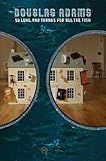The straight razor has come a long way to the distilled disposable versions of it that we use today. A straight razor is simply a razor with a blade that can fit inside its handle. They require a certain skill in order to wield one properly to shave and barbers have made their livings off of this particular shaving technique for hundreds of years.
During the late 1500's and early 1600's, blacksmiths created crude instruments that were meant to remove a man's beard and resembled small hatchets. During the 1700's straight razors took on a wedge~shaped design with a straight edge. Typical handles were made of horn, wood and bone, though tortoiseshell and ivory were sometimes used also. Razors made from 1740 ~ 1830 were sometimes marked with words such as "warranted" or "cast steel" to show that they metal was made by Robert Huntsman of Sheffield, who invented the technique in 1740. They were crude designs but they were the cutting edge of their time.
During the early 1800's, silver was added to the blades when Michael Faraday discovered the process but it still required another 60 years to bring that process to its final stage of development. Very large, wedge~bladed razors were fashionable during this time and and they were sometimes marked, "For Barbers Use" or "improved silver steel". Blade designs began to take on impressive decor as the makers of razors strove for better patterning scales which were etched into the blades, given an edge to competitive markets.
During the late 1800's to early 1900's, factory made blades began making their introduction into society. A celluloid process was introduced making it easier for manufacturers to sculpt and mould the designs for mass markets. In 1914, the company, J. A. Henckels offered no less than sixteen different straight razor blades to choose from.
Straight razors remained popular right up into the 1950's, until Gillette, which introduced its razor in the markets in 1901, gained a reputation for being the easier of the two shaves and while straight razor shaving is still in practice today, many men opt for the convenient method of shaving.
In order to use a straight razor properly one must first prepare your beard by either taking a hot shower or by pressing a hot, steaming cloth to the area to be shaved. After prepping your beard, run the hot water, fill your mug/bowl and place your brush into the hot water.
You will want to really wet your face up before you lather. Use the brush to apply the lather and apply it to your face, swirling until the lather has formed stiff peaks. Then apply the lather in a paintbrush motion using the badger brush. Remember to remove any excess with a hot towel/cloth to remove oil from the follicles so that moisture can penetrate.
After you have finished lathering, let it sit on your face for about 5 minutes, longer if your beard hair is coarser/thicker. If your soap dries out while you wait, re~lather those areas. The important thing is to have a nice thick lather so that the blade glides the area more smoothly.
Using the blade, hold it at a 20° angle to your skin. Remember to stretch your skin as you shave, and shave the area whence it is tight. You are not slicing into your skin, but holding the blade at an angle so that you can glide the blade across your skin's surface while removing the offensive hair that remains.
You will make three passes for optimal smoothness when shaving in this method. The first pass you will shave with the grain or in the direction of your hairs growth. Lather yourself up again and on your second pass shave sideways to the grain. On the third and final pass, make it against the grain, if you have a coarser beard you may have to change your razor before the third pass.
Rinse the lather off of your face with cold water so that it will aid in the closing of your pores. Clean up your area and enjoy your newly shaved face~!!
 ** This is a sponsored post for The Art of Shaving, however, all the points and views are my own~!! **
** This is a sponsored post for The Art of Shaving, however, all the points and views are my own~!! **
























































No comments:
Post a Comment
Please leave us some love...and have yourself a groovy day~!! Peaces...xoxo